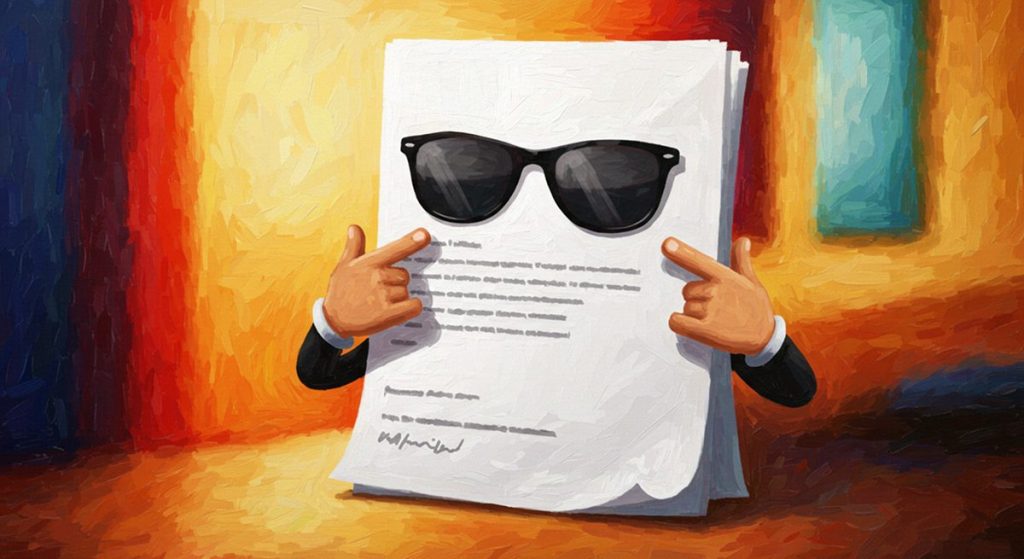A high-stakes job interview is one of the few moments that can change your career path in a single conversation. Companies often draw very large applicant pools, and a well-cited analysis shows an average corporate opening can attract around 250 applications, with only a handful invited to interview. That means you are already in select company once you meet the interviewer, and clear preparation is the edge that moves you forward.
The process also takes time and has moved partly online. Glassdoor research has reported U.S. time-to-hire around three to four weeks on average, and many organizations continue to use video interviews to speed scheduling and improve access. Treat your set‑up and camera presence as part of your plan, because early impressions form fast. CareerBuilder surveys have found that many hiring managers form a view within the first five minutes.
Key Preparations
Start by reading the job description line by line and writing down what the position must deliver in the first six to twelve months. Build a short “story bank” that proves you can deliver those outcomes. Use the STAR method once and stick to it. Describe the Situation and Task in a sentence or two, state the Actions you took, then finish with a clear Result. This structure keeps you from drifting into too much detail and helps the interviewer follow your logic. Large reviews in industrial‑organizational psychology show that structured interview questions and work samples predict job performance more reliably than free‑form chats. Common interview formats draw from this research for a reason.
Match your stories to the company culture and work environment. Add one concise paragraph that explains why you are the right person for this position. Link your skill set to the company goals, and add two sentences that show fit with how the team operates. Bring numbers. Revenue saved, time reduced, quality improved, or adoption increased are simple and powerful. If you are moving from a previous job in healthcare to a new position in tech, for example, show how project management and communication skills moved a clinical rollout on time and how those same skills will help a software deployment. If your current role is in finance and you want a new job with a nonprofit, translate risk control and organizational skills into stewardship and donor trust.
Plan delivery. Rehearse out loud until each story takes under two minutes. Record yourself and check eye line, pace, and posture. In person, arrive early, offer a firm handshake, and maintain steady eye contact. On video, set your camera at eye level and keep your background simple. Research on asynchronous video interviews suggests that eye contact on camera matters because viewers read attention through where you look. Aim your gaze at the lens when you speak.
Prepare for screening tools. Many large companies use applicant tracking systems, and recent audits show Fortune 500 firms rely heavily on platforms like Workday and SuccessFactors. Use keywords from the job description, but write for clarity, not tricks. Reports and investigations warn that keyword stuffing can backfire and that human reviewers still make many calls. Research the posting, map language honestly to your past experiences, and keep formatting simple so parsing works.
Add modern practice. Try an AI practice tool to warm up and build confidence. Google’s free Interview Warmup simulates prompts and gives instant feedback, which helps you stay calm under pressure. Treat it as rehearsal, not a script, and always personalize your answers for the real company and position.
Round out your plan with context on the hiring process itself. Expect take‑home assignments, panel presentations, or even one‑way video questions. Work samples and practical tasks are common because they predict performance. If you receive a case or a brief project management exercise, use the same structure you will use in the room: problem, options, decision, impact.
The 10 Common Interview Questions
Use the STAR method (Describe a specific Situation, the Task they were responsible for, the Actions they took, and the resulting Results) to keep each answer tight. These are common interview questions, and many companies use similar prompts across industries. Treat them as short cases. Speak to the job at hand, show your skills, and connect to the company’s needs.
Question 1: Tell Me About Yourself
Keep it to about a minute. Start with your current role and the value you create. Add one result from a previous role that maps to this job. Close with why this position at this company is the next step in your career path. A tech example could be, “I lead onboarding for a B2B app and cut time‑to‑value by 22 percent last quarter. Earlier, in healthcare, I coordinated a patient portal rollout across three clinics. I want to bring that project management and service mindset to a product team that serves enterprise accounts.” Mention core skills like problem solving and communication skills so the interviewer hears how you operate.
Question 2: Why Are You Interested in This Job?
Prove fit through research. Name the product, customer group, or metric you studied, and explain how your work style fits the work environment and company culture. If you care about inclusion, state how you have made space for voices on your team and why that matters here. Recent employer research shows DEI remains a priority for many workers, especially younger ones, so it is sensible to connect your values to the company’s public stance. Finish with how you will help the team hit a concrete goal in the next two quarters.
Question 3: What Are Your Strengths?
Pick two or three that match the job. In finance, highlight risk sense and communication skills that guide decisions. In tech, hit problem solving with a metric, like cutting defect rates or improving deployment time. In nonprofits, show stewardship and community trust with numbers tied to grants or volunteer retention. Give one short STAR story per strength and end with why that strength helps this team today. This keeps the answer focused and avoids a long list.
Question 4: What Is Your Greatest Weakness?
Show self awareness and personal growth without undercutting the position. Choose a real but non‑critical gap such as early discomfort with public speaking or slow delegation. Explain what you did, like coaching, a routine to stay organized, or a new skill you learned, and share the result you see now. Close with how you will keep it in check. The tone should be honest, specific, and brief.
Question 5: Why Did You Leave Your Last Job?
Stay honest, positive, and forward‑looking. A clean option is, “I learned a lot at my current company and last job. I am seeking broader scope and growth opportunities that match this position.” If needed, reference a last position or previous job in one neutral sentence. Avoid blame and too much detail. Tie the move to the company strategy and your career goals so the interviewer hears a thoughtful plan.
Question 6: Describe a Challenge You Faced and How You Handled It
Pick a challenging situation from your past experiences that shows judgment. In healthcare, that might be a capacity spike where you balanced safety and throughput. In software, it might be a release at risk because of integration debt. Explain how you prioritized multiple tasks, how you handle stress, and how you kept the team aligned. Share the outcome in numbers and one lesson you carried forward. This is one of the most common job interview questions, and it shows calm execution.
Question 7: Where Do You See Yourself in Five Years?
Link ambition to value. Answer plainly, “Here is where I see yourself in five.” Step through the skills you plan to build over five years, from deeper project management to coaching a small team. Explain how those steps help the company. Keep the focus on outcomes you will own rather than job titles. This shows a credible career path and a plan to contribute in the future.
Question 8: Tell Me About a Time You Demonstrated Leadership Skills
Describe how you set direction, coached people, and removed blockers. If you have been in a managerial role, add how you grew others and managed risk. Cross‑functional delivery matters, so include how you worked with finance, legal, or operations. State the result and what you would repeat next time. Show leadership skills with evidence, not adjectives.
Question 9: How Do You Handle Conflict at Work?
Conflict is common in busy teams. Explain your work style for resolution. Clarify the shared goal, separate facts from opinions, listen, then discuss options and decide. Offer an example where you reframed the goal, reset roles, and closed with a written decision. Note how you acted as a team player and protected delivery for the company. If the conflict touched on inclusion or hybrid schedules, mention how you made space for different needs and still met the deadline.
Question 10: What Are Your Salary Expectations?
Use market research and position scope. A balanced answer is, “Based on the responsibilities for this position and current market data, my salary expectations are $X to $Y total. I am open to discuss details once we confirm fit.” If asked early, you can pivot to understanding scope first. When you receive an offer, remember that total compensation includes insurance, time off, education budgets, equity, sign‑on, remote flexibility, and wellness benefits, all of which feature in recent benefits surveys. Anchor on value and be ready to explain your range.
Advanced Interview Strategies
Modern processes use several formats. Behavioral prompts ask for past actions. Situational questions test how you would respond to a new scenario. Competency‑based interviews line up with a job description and rate each skill against a rubric. Some teams run “stress interviews” to see how candidates handle stress or think under time pressure. Prepare by writing down two stories for each core area of the position and by practicing a calm reset line such as, “Let me step through the options and their trade‑offs.” Work samples and take‑home tasks remain common because they predict outcomes, and asynchronous video interviews require special care with eye contact and energy. Research on video interviews shows that looking into the lens helps you appear engaged even though it changes how you read the other person’s face.
Structured interviews deserve a final mention. They are fairer and more predictive than open conversations when done well. Employers who standardize questions and rating guides make better hiring calls on average, and this has been shown across decades of studies. Knowing this helps you as a candidate. You can expect consistent topics, and you can meet them with consistent, evidence‑based answers.
Common Interview Pitfalls
Many rejections happen even with a strong résumé. The most common mistake is to talk for too long without a clear result. Another is to bring stories that do not match the job description or the company stage. Negative talk about a current job or previous role is a fast red flag for hiring managers. Treat every interview like a business meeting where you explain how you will help the team hit targets, and keep each answer short enough to invite follow‑up.
First Impressions
Early signals carry weight. Studies on “thin slices” of behavior show that people form views from very short observations, sometimes in under five minutes. That does not mean you must act like someone else. It means you should arrive prepared, breathe, and open with a concrete result before you give the background. In person, make eye contact and offer a firm handshake where appropriate. On video, keep your camera steady, your lighting simple, and your notes off‑screen.
Communication Errors
Two habits sink strong candidates. The first is the monologue. Aim for one headline, two proof points, and one result. Then pause. The second is vague claims without numbers. Even small figures help. If you feel anxious or you slip on a question, name it and recover. You can say, “I lost my thread for a moment. Here is the result and how I got there.” That moment of control will help you build confidence and brings the interviewer back to the facts.
Overselling Yourself
Comparing yourself to other candidates rarely helps. Keep the focus on outcomes and your own evidence. Balance confidence with self awareness by giving credit to partners and calling out one risk you managed. Leaders want a steady person who can influence without ego and act as a team amplifier.
Pitfalls During the Interview Process
Do not use one script for every interviewer. Adapt to the round in front of you. Technical panels care about design choices and trade‑offs. Executive panels care about customer impact and risk. If you receive a panel presentation, start with the outcome you will drive, then walk through the path, and finish with risks and mitigations. If you face one‑way video prompts, record two practice takes on your phone and watch your eye line. When you finish an interview, close by stating why you are the right person for the new job and how you will help in the first 90 days. Send a short thank‑you within a day. Surveys show many managers still notice the follow‑up and appreciate the courtesy.
Novel Insights
Use storytelling patterns from screenwriting to make answers stick. Think in three beats: setup, conflict, resolution. In a data migration for a bank, for example, the setup is the target platform and deadline, the conflict is a surprise performance issue that could delay a customer launch, and the resolution is the project management sprint you led to isolate the bottleneck and reduce query time by 40 percent. Combine that with thoughtful mirroring. Light, natural mimicry of pace and phrasing helps rapport and can improve information flow in negotiations. Research in negotiation has shown that subtle mimicry builds trust and can lead to better joint outcomes. Do this sparingly and respectfully. The goal is to listen well, not to copy.
For offer talks, use negotiation tools from diplomacy. Know your BATNA, which is your best alternative if you cannot reach agreement, and set a walk‑away point before you begin. This helps you manage emotion and seek a fair deal that reflects scope, impact, and market.
Conclusion
Treat common interview questions as a chance to show how you will help the company win. Use focused stories, prove your skill set, and close each interview with a clear value statement. Be honest, stay curious, and connect your career path to the position in front of you. Keep learning after each round so your next interview is sharper. Good preparation gives you control, and steady delivery turns that preparation into results.
Frequently Asked Questions
How can I research a company effectively before an interview?
Go past the homepage. Read investor pages, product notes, customer reviews, support forums, and credible news. If the company ships software, open release notes and look at what changed. If it serves patients, read quality or safety reports. Map what you learn to the job description, the work environment, and the company culture. Note how the team measures success and how decisions get made. If the organization uses an ATS, keep your résumé clean and align language with the posting so your skills are easy to parse, but avoid keyword stuffing, which recruiters and tools can detect. Prepare two or three questions about metrics, risk, and customers so you can discuss real work and answer follow‑ups with context.
Should I follow up after an interview, and if so, how?
Yes. Send a brief thank‑you within twenty‑four hours to each interviewer. Thank them for the conversation, restate one result tied to the position, and offer a resource if useful. If the conversation went cold or felt tense, stay professional and focus on shared goals. If you promised to send something, do it the same day. Surveys over the years show many managers still weigh thank‑you notes, so the small effort helps. If you have not heard back by the agreed date, send a polite check‑in that asks whether you can provide anything else.
What if I’m interviewing for a role in a completely different industry or career path?
Explain the through‑line in your past experiences and prove transfer. Anchor on portable skills such as project management, analytics, safety, or service. Bring one story with numbers and one with influence or change. If you face AI screens or online tasks, keep your materials clear and aligned with the posting, and use a practice tool to sharpen your STAR method delivery without copying stock text. Make your motivation real by showing what you have learned already and what you plan to learn next. State why this new job fits your career goals and how the company benefits. This shows focus, grit, and a plan leaders can trust.










